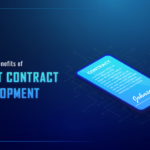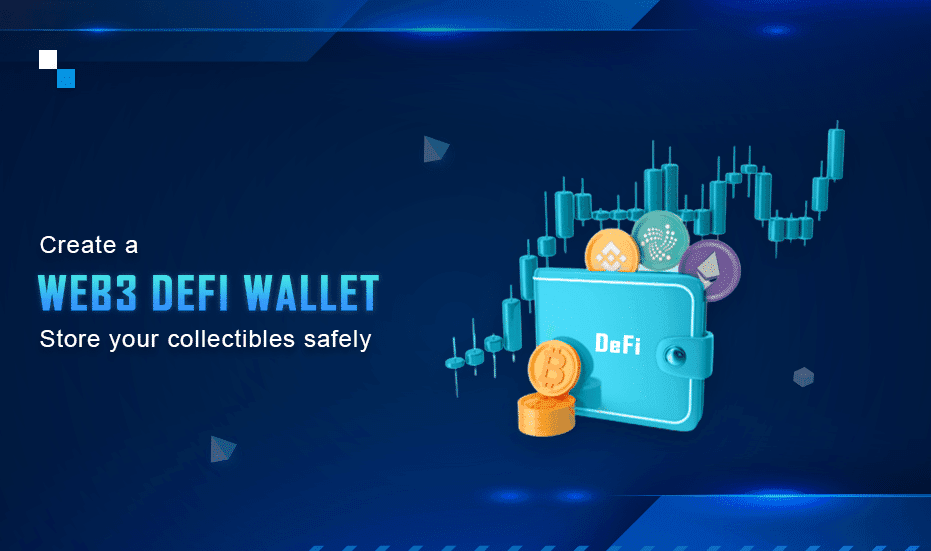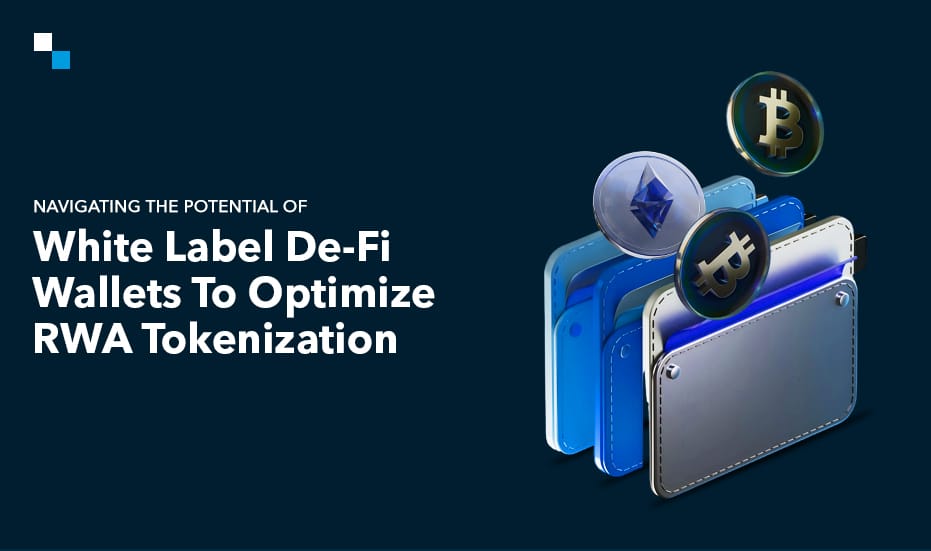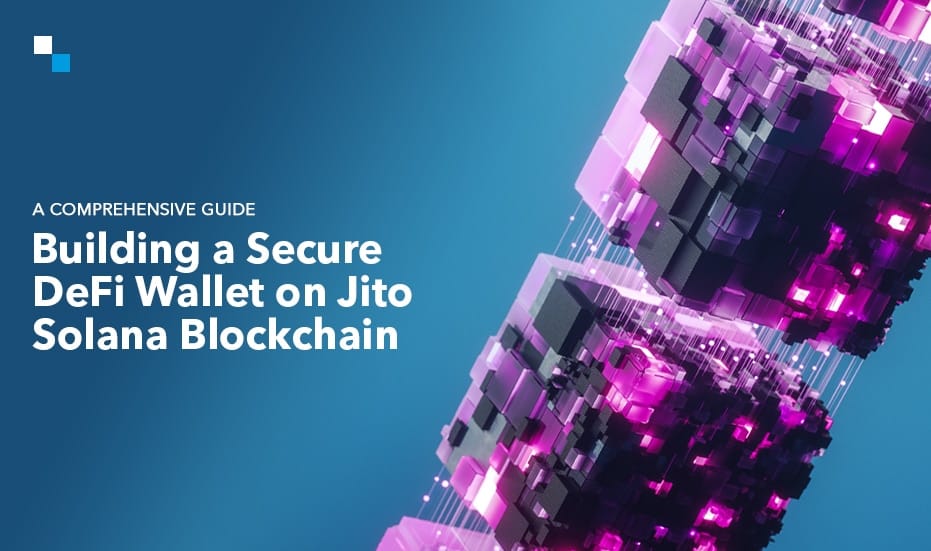
Start Your Tron DApp Development Journey Today!
November 3, 2022
How Smart Contract Application Development Is Changing The Ways of Handling Businesses
November 3, 2022The future of finance depends a lot on DeFi applications, they have been changing the industry since their launch. DeFi is a new financial system built on distributed ledgers and used by cryptocurrencies. The DeFi system has complete control over money, financial products, and financial services without the help of banks and other institutions.
A DeFi wallet is crucial for the success of the rapidly expanding financial sector. If you are starting up a project, the DeFi web3 wallet could be the ideal choice! Imagine giving your customers a global open substitute for any financial service, whether it is trading, savings, loans, insurance, or loans. You must get to know how to create a web3 DeFi wallet.
With that being said, DeFi has quickly established itself as a competitive alternative to existing banks, exchanges, and other financial institutions. As a result, the market for assets locked in DeFi-protocols increased to $ 55 billion in 2021. At the same time, DeFi wallets have emerged as the main winners and act as the go-betweens for customers and decentralized financial services for the industry’s expansion. This blog has complete information on DeFi web3 wallet development. Let’s find out more!
DeFi Web3 Wallet: Get Started With The Basics!
Participation in the various ecosystems is rapidly rising with Web3 programming and cryptocurrency popularity. However, some significant obstacles are also being resolved as the market becomes more approachable. The crypto industry is developing and making it more accessible to create a web3 DeFi wallet. New dApps, tokens, NFTs, and Web3 wallets are constantly being created to enter the crypto world since they serve various crucial roles in the Web3 space. You must delve deeper to gain a better understanding of the DeFi web3 wallet. If you’re new to the industry, let us first explain some of the features of this wallet:
- Web3 wallets are dependable, decentralized, and incorporate private key protocols.
- Recovering the wallet is easy. The seed phrase can be used to recover your wallet account if you ever lose access to it.
- The user can configure non-custodial wallets like Metamask utilizing browsers, and they will allow them to recover the assets as well.
- An offline mode is used to store the recovery phase. Avoid storing anything on the computer as it may increase the risk of hackers or malware access.
- To trade tokens and guarantee secure transfers using non-custodial wallets, a standard decentralized exchange is implemented.
- People visit decentralized exchanges to discover the cheapest pricing.
- Users of DeFi web3 wallets like Metamask can instantly compare DEX prices and exchange them after discovering the best offers.
- The fact that Web3 applications serve as access points to dApps is their biggest advantage. Blockchain apps are free from the limitations imposed by centralized platforms. Thanks to crypto assets and the Web3 wallet, dApp engagement is now feasible.
Benefits of Creating DeFi web3 wallet
DeFi wallets are fascinating for testing out novel financial solutions with the least amount of friction. They represent an important development in the democratization of old financial products as well as the creation of new ones.
The non-custodial feature of DeFi web3 wallets allows the wallet owner to store digital assets without the requirement for a third-party mediator. No one has access to your tokens, and only the user has exclusive control of all his assets. Exclusive access means the user is solely responsible and it is imperative to keep his private keys to himself.
Knowing how to create a web3 DeFi Wallet can solve many issues and offer extra features in addition to the capacity of digital assets. It’s highly appreciated to utilize a DeFi web3 wallet to properly manage your assets and buy tokens. There are many different wallets available on the market, but the most well-known ones include MetaMask, TrustWallet, Argent, and others.
- The traditional financial market is slow. A deposit or loan from a traditional bank takes several days. Depending on the blockchain, DeFi wallets require only a few seconds or several minutes for transactions.
- Users of the DeFi app can avoid paying fees for transfers while earning passive income from crypto assets, deposits, loans, and insurance. It guarantees good business efficiency.
- Wallet users are completely in charge of their belongings. DeFi does not require centralized authority or middlemen, giving users complete financial independence.
DeFi stands out for a number of reasons, in addition to this one. These characteristics are what have prompted so many current users to join the DeFi journey and discover the DeFi web3 wallet.
How To Create A Web3 Defi Wallet In #6 Easy Stages?
Step 1: Outlining the issue and establishing objectives
Finding out how the DeFi wallet will address a specific issue and whether blockchain technology is required is a crucial aspect. It would be beneficial to have a business analyst on board to create a DeFi web3 wallet.
Step 2: Creating the architecture
Here, you should decide whether to store your DeFi wallet locally, in the cloud, or in a hybrid environment. Using the cloud architecture is recommended. The next step is to select the ideal access solution, such as a permissionless solution, hybrid blockchain, private blockchain, or public blockchain. Each solution can function better than another, as it depends on the nature of your firm. However, if you want to learn how to create a web3 DeFi wallet with diverse responsibilities, hiring a private blockchain team would be the best option.
Step 3: Choosing the Consensus Algorithm
Like in every decentralized system, the developers’ frame network’s participants would authenticate a transaction, whatever it is by proof of work, proof of stake, etc. Consult a knowledgeable group of developers and business analysts who can help you create an operational DeFi web3 wallet.
Step 4: Platform Selection
You need to choose a blockchain platform before you can develop your DeFi web3 wallet. Make sure to take into account your needs like stability, scale, solutions, and affordability as well. Ethereum’s being an open-source solution platform, aids in cost-saving and development speed.
Step 5: UI and Admin Console Design
Regardless of how excellent your backend is, a user will be able to judge the DeFi wallet based on its user-friendly interface and functionality. To succeed, you need front-end designers and developers who are skilled and experienced to create a web3 DeFi wallet.
Step 6: Putting the wallet and testing it
One of the main characteristics of blockchain technology is immutability. Ensure that your wallet has passed a thorough testing phase before its launch. We advise making the MVP model to scale the wallet and even connect it with other technologies, such as AI, Big Data, IoT, etc.
Conclusion: Step Ahead And Create A Web3 DeFi Wallet!
Thanks to technology, users can now engage with other DeFi apps to manage their assets via decentralized wallets. The success of the entire DeFi ecosystem depends on the performance of DeFi web3 wallets. It is definitely a vital substitute for traditional banks and centralized money. We have observed a sharp surge in the variety of alternative wallets on the decentralized web. DeFi is here to stay, despite how young the sector is!
The first thing you’ll need to enter the world of cryptocurrencies is to explore how to create a web3 DeFi wallet. You may create your own wallet with unique features by contacting professional developers. Reach out to Antier and hire an experienced development team now!



